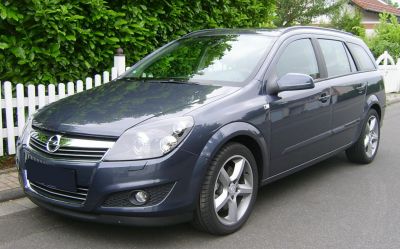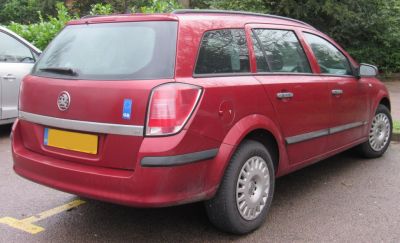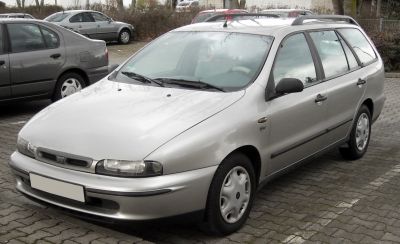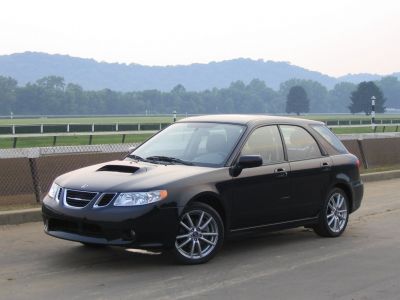 1996 Hyundai Elantra II Wagon Dimensions, Size & Specs
1996 Hyundai Elantra II Wagon Dimensions, Size & SpecsMeasurements of the 1996 Hyundai Elantra II Wagon, engineered for optimal performance and comfort
| Dimensions | |
|---|---|
| Length: | 4450 mm175.2 in14.6 ft |
| Width: | 1700 mm66.9 in5.6 ft |
| Height: | 1457 mm57.4 in4.8 ft |
| Trunk Capacity: | 362 liter12.8 cu ft |
| Trunk Capacity (Max): | 607-1260 liter21.4-44.5 cu ft |
| Weight Specifications | |
| Curb Weight: | 1235-1310 kg2723-2888 lbs |
| Maximal permitted Weight: | 1715 kg3781 lbs |
| Tire Specifications | |
| Rims Size: |
|
| Tire Sizes: |
|
The Hyundai Elantra II Wagon, produced from 1996 to 2000, is a practical and versatile station wagon designed to appeal to families and drivers seeking a balance of space and maneuverability. With an overall length of 4450 mm (175.2 inches), a width of 1700 mm (66.9 inches), and a height of 1457 mm (57.4 inches), this model fits well within the compact station wagon category, providing a comfortable cabin space while remaining easy to handle in urban environments.
The curb weight of the 1996-2000 Elantra II Wagon ranges between 1235 and 1310 kilograms (2723 to 2888 lbs), while its maximum weight capacity reaches up to 1715 kilograms (3782 lbs). These weight metrics suggest a robust build that supports both daily driving and heavier loads without compromising performance.
Luggage capacity is a key feature of the Elantra II Wagon, offering 362 liters (12.8 cubic feet) of storage with rear seats up. When fully folding the rear seats, this capacity extends significantly, ranging from 607 to 1260 liters (21.4 to 44.5 cubic feet), making it ideal for carrying larger cargo or luggage on road trips.
Equipped with 14-inch rims, the vehicle uses tire sizes of 175/65 R14 or 195/60 R14, optimizing a smooth ride and providing sufficient road grip for various driving conditions.
In summary, the Hyundai Elantra II Wagon from 1996 to 2000 offers a well-rounded station wagon option with moderate dimensions, flexible luggage space, and practical weight specifications. It remains a noteworthy choice for those prioritizing cargo versatility and compact driving footprint.
Discover the standout features that make the 1996 Hyundai Elantra II Wagon a leader in its class
Have a question? Please check our knowledgebase first.
The Hyundai Elantra II Wagon produced from 1996 to 2000 measures 4450 mm (175.2 inches) in length, 1700 mm (66.9 inches) in width, and 1457 mm (57.4 inches) in height. These dimensions give it a balanced compact station wagon profile that suits urban driving and parking while providing ample interior space.
The curb weight of the Hyundai Elantra II Wagon ranges between 1235 kg to 1310 kg (2723 to 2888 lbs), depending on trim and equipment levels. The vehicle’s maximum weight, which includes passengers and cargo, is approximately 1715 kg (3781 lbs). This weight range ensures a good balance of fuel efficiency and load capacity for a station wagon of this size.
The Hyundai Elantra II Wagon comes with a luggage capacity of 362 liters (12.8 cubic feet) with all rear seats in place. When the rear seats are folded down, the available space expands significantly, ranging from 607 liters (21.4 cubic feet) to a maximum of 1260 liters (44.5 cubic feet), making it versatile for carrying larger cargo loads or luggage.
This generation of Hyundai Elantra Wagon commonly features 14-inch rims. Tire options include the sizes 175/65 R14 and 195/60 R14. These tire sizes provide a balance of ride comfort, handling, and road grip suited for both city and highway conditions.
Yes, the Hyundai Elantra II Wagon fits comfortably into a standard garage. With a width of 1700 mm (66.9 inches) and a height of 1457 mm (57.4 inches), it is well within the average size limits of most residential garages, which typically accommodate vehicles up to approximately 2 meters (78.7 inches) in width and 2.1 meters (82.7 inches) in height.
Compared to the previous generation Elantra, the Elantra II Wagon generally exhibits slight dimensional increases, particularly in length and interior cargo space. This gave the newer model improved passenger comfort and more practical luggage capacity, aligning with the mid-to-late 1990s automotive trend toward more spacious compact wagons.
The Hyundai Elantra II Wagon is competitively sized compared to other mid-1990s compact station wagons. Its 4450 mm (175.2 inches) length and 362 to 1260 liters (12.8 to 44.5 cubic feet) luggage capacity place it close to popular rivals like Toyota Corolla Wagon and Honda Civic Wagon. It offers decent cargo space and manageable dimensions for city and family use.
The Elantra II Wagon’s compact yet spacious design allows for easy maneuverability in urban environments while providing generous cargo space. Its dimensions and weight provide a comfortable ride with practical luggage capacity versatility, making it ideal for smaller families, weekend trips, and daily commuting.
The standard 14-inch rims paired with 175/65 R14 or 195/60 R14 tires help balance ride comfort and road handling. The tire size enhances grip for varied road conditions while maintaining good fuel efficiency. This setup is typical for compact wagons aiming for reliability and driving ease over sporty performance.
With a curb weight between 1235 kg to 1310 kg (2723 to 2888 lbs), the Elantra II Wagon maintains good fuel economy characteristic of compact wagons of its time. The weight balance supports stable handling and adequate ride comfort without overly compromising acceleration or braking, making it suitable for daily driving and longer trips.
Discover similar sized cars.

| Production: | 2007-2010 |
|---|---|
| Model Year: | 2007 |
| Length: | 4515 mm177.8 in |
| Width: | 2033 mm80.0 in |
| Height: | 1500 mm59.1 in |

| Production: | 2004-2011 |
|---|---|
| Model Year: | 2004 |
| Length: | 4515 mm177.8 in |
| Width: | 2033 mm80.0 in |
| Height: | 1496 mm58.9 in |

| Production: | 1996-2002 |
|---|---|
| Model Year: | 1997 |
| Length: | 4484-4490 mm176.5-176.8 in |
| Width: | 1741 mm68.5 in |
| Height: | 1495-1510 mm58.9-59.4 in |

| Production: | 2004-2006 |
|---|---|
| Model Year: | 2005 |
| Length: | 4460 mm175.6 in |
| Width: | 1695 mm66.7 in |
| Height: | 1465 mm57.7 in |
